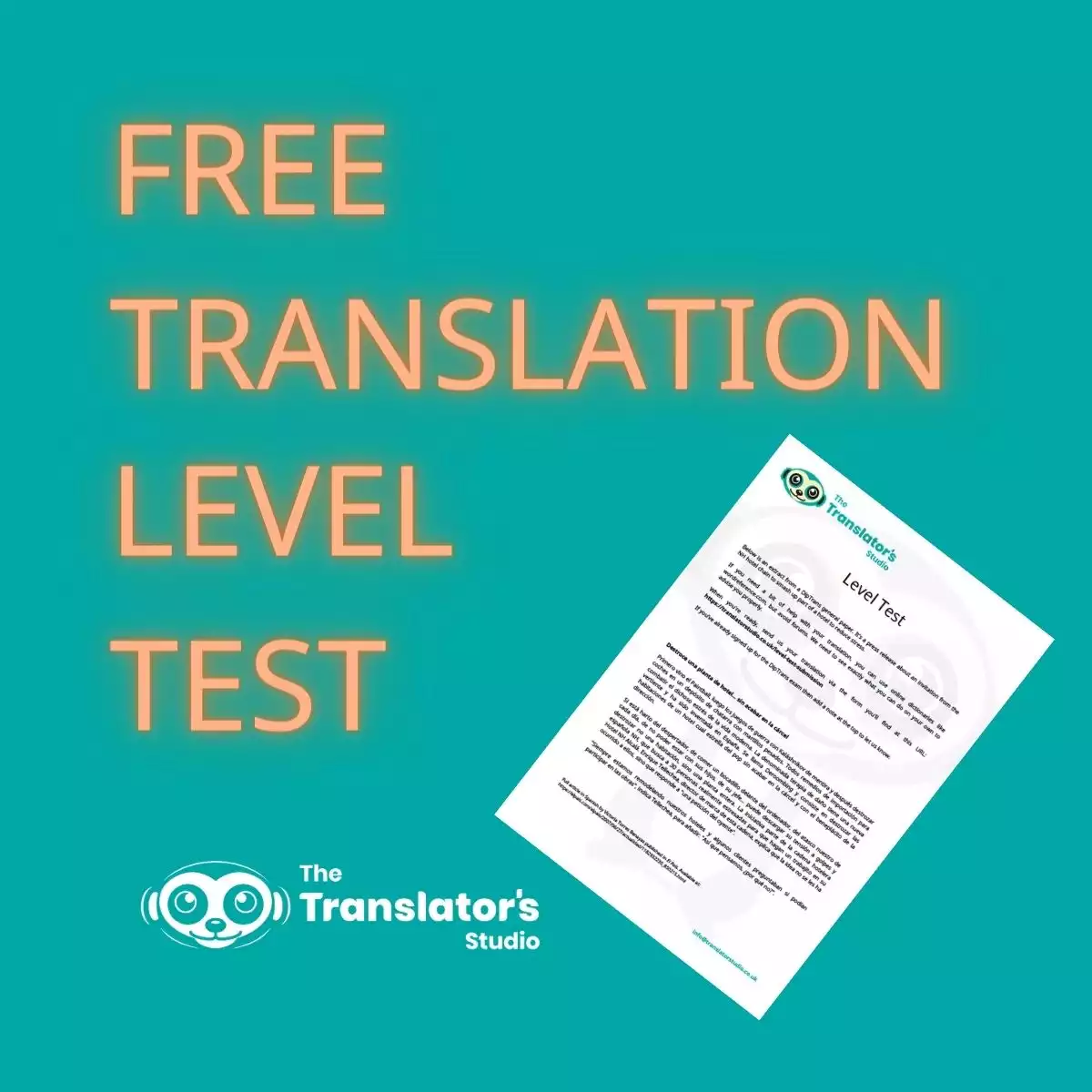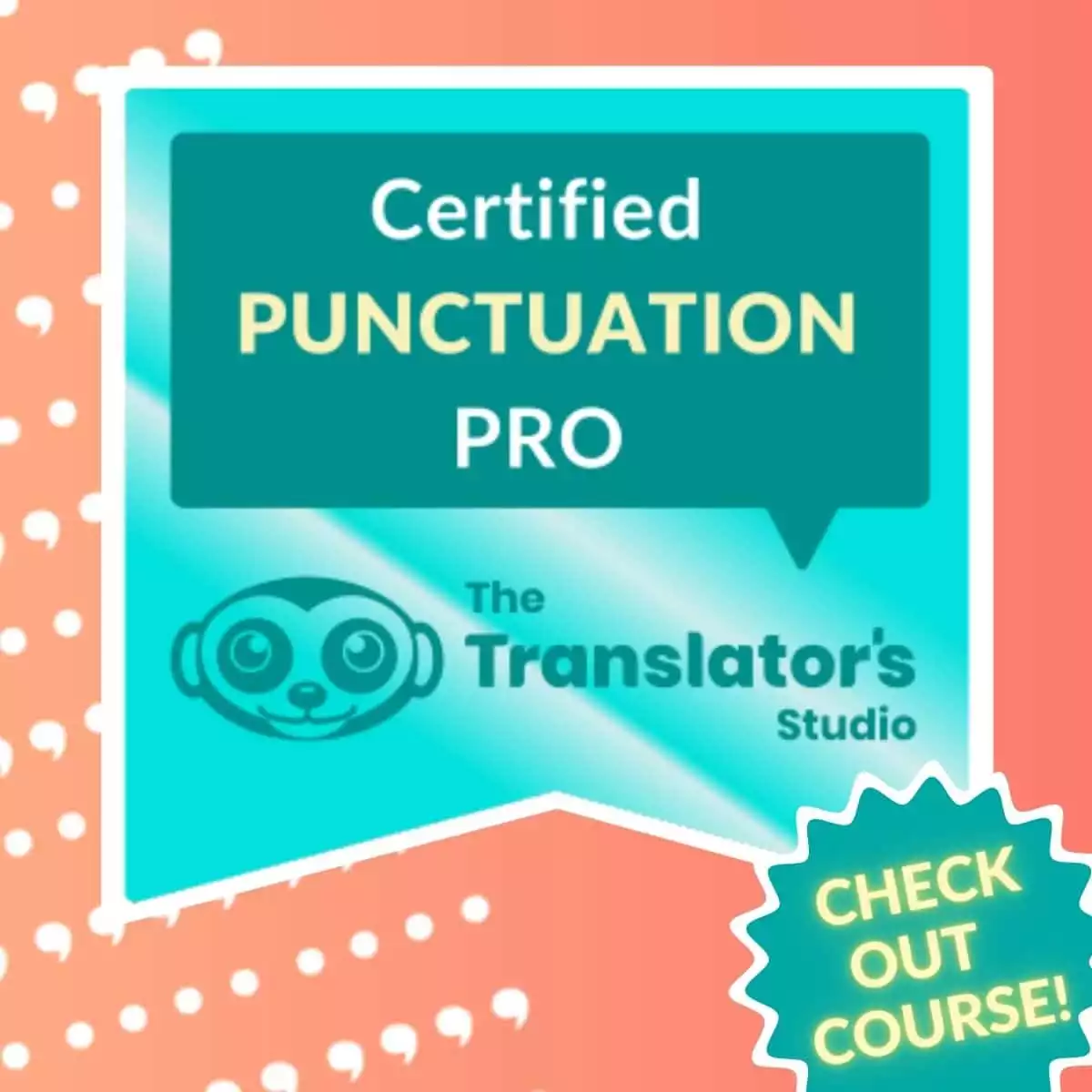Even for experienced translators, preparing for the CIOL DipTrans exam is essential if you want to pass. The DipTrans takes place twice a year in January and July. So, it’s time to start preparing for the DipTrans 2025. Here’s a list of my top DipTrans exam preparation essentials.

DISCLOSURE: We sometimes review or link to products and services we think you might find helpful. Wherever possible we use referral links. This means if you click one of the links and make a purchase, we may receive a small commission or other compensation.
1. Exam preparation training
Number one obviously has to be training. This is a professional, post-graduate exam with a low pass rate (around 30% for some papers). I followed the excellent Advanced Translation Course with DipTrans preparation, which combines exam-style practice with an additional taught element, really helpful for improving, not just practising.
If you’re a translator with less than two years of on-the-job experience, start with the translation Conversion Course.
Unsure whether you're ready for the CertTrans, ATA exam or DipTrans?
Do our free translation level test and find out.
Available for Spanish- and French-to-English translators.
2. Exam timing
An important part of DipTrans preparation is timing. The Translator’s Studio course was great for recommending timings for drafting and proofing/correcting. Another tip here is to invest in a stopwatch. You won’t be able to use a mobile phone in the exam room and it’s vital to stick to your timings and not miss anything out.
It’s also really important to do practice exams under timed conditions. Read this article for “5 Websites for Free Practice Texts for the Institute of Linguists Diploma in Translation”.
|
|
- Become a confident professional translator
- Learn fast with our extremely detailed feedback
- Prepare to pass the CertTrans exam
- Get your translation certificate
- Network in our private Facebook group
- Become a more successful translator
- Learn fast with our extremely detailed feedback
- Prepare to pass the CIOL DipTrans exam
- Get your advanced translation certificate
- Network in our private Facebook group
3. English grammar
You might think this is a basic one, but you’ll be amazed by the traps you can fall into. Some of my personal areas to watch included nominalisation and compound adjectives.
Having expert translators like our tutors check your work with a fine-tooth comb weeds out those silly mistakes you didn’t realise you were making.
Have a look at this article about “10 Proofreading Mistakes by Trainees on my DipTrans Online Course”. We also have an article that includes good book recommendations for grammar for native English speakers.

4. Read (and listen) widely in the run-up to the exam
Read as much as you can related to the subject areas of the DipTrans exam papers you think you might choose for the semi-specialist options. I chose literature, so I read up on literary translation. I also tried to read widely within English literary writing, as you don’t know what writer or literary genre you’ll get.
The CIoL preparatory notes on translation advise candidates to “read widely and keep abreast of current affairs so that they are not daunted by unfamiliar cultural references”. If you’re working with an international language like Spanish, don’t forget to read texts from different countries where they speak the language.
Podcasts can also be a good option because they let you take advantage of moments in your day when you can multitask. Try Radio Ambulante to improve your knowledge about the culture of Latin America.
5. Stationery and other equipment
Get yourself into a translation routine so that, come exam time, your process is second nature. I liked to make notes on the exam paper on my first read through and would put the exam paper on a document holder to avoid having to twist my neck.
I had bookmarks for my paper resources and organised my reference materials into a folder of plastic envelopes to flick through easily.
6. Feedback and acting on it
The feedback offered by The Translator’s Studio is extremely detailed. But it’s of no use to you unless you take time to study it and take the learning on board.
Besides studying my feedback carefully, I made notes on my translation choices after I finished each translation task. It really helped to sharpen my critical faculties and think more carefully about my decisions.
Another part of the DipTrans preparation course that I enjoyed was the private Facebook group. I used it to interact with my teacher and other students and discuss the exam and translation challenges further.
- Become a more successful translator
- Learn fast with extremely detailed feedback
- Prepare to pass the CIOL DipTrans exam
- Get your advanced translation certificate
7. Knowing the DipTrans exam
Make sure you know what’s expected of you. It’s not a cheap option, especially as very few people pass all three papers first time. This means you’ll probably have to re-sit at least some of it. Your first stop should be the CIOL website, to acquaint yourself with the structure of the exam, the task types and what the examiners are looking for.
Also, make sure you watch the two interviews that Gwenydd Jones did with John Worne, the CEO of the CIOL, about the DipTrans and how to pass it.
8. Proofing your translation
I don’t know about you, but I hate proofreading. I’d much rather translate. But it’s of vital importance in the DipTrans exam. You need to be able to proofread your own work totally objectively before you hand in the final version.
It’s very easy to be blind to your own mistakes and become hypnotised by the source text. The article I mentioned earlier on proofreading mistakes by trainees on the DipTrans course is very helpful for this.
There’s no replacement for really understanding English punctuation and the only way to do that is to study it. Don’t miss the Punctuation Pro course, which is very reasonably priced and a must-have for anyone who wants to work in the world of writing and editing.
Get a certificate in punctuation!
- Learn punctuation fast
- Get confident
- Build up your CV to impress clients
9. Resources
By failing to prepare, you prepare to fail. You can rely only on paper resources in the exam and so you need to think carefully about what you might need and have it all organised ready for the exam. Apart from good monolingual and bilingual dictionaries, one good tip is to make a list of translations for organisations, titles, government ministries and so on.
Also, if you work with Spanish, the source text could be from a Latin American country. For French, it could be about an African country. So, it can help to know a little basic information about each country and have this in a reference file.
Check out these articles on the best thesaurus to buy, the best Spanish–English bilingual dictionary and the best French–English bilingual dictionary.

10. Confidence
The DipTrans exam is a daunting prospect. I’ll admit I was a little scared. But, The Translator’s Studio course gave me a great grounding. Come exam day, I knew I was a better translator for having done the course. Don’t be afraid, be prepared!
5 more top DipTrans exam tips from our past students
11. Leave time for proofreading
In the 2017 exam session, Jessie Forbes was struggling with spending too long on terminology research. This meant she struggled to leave enough time for proper editing and proofreading. After the exam, Jessie wrote: “I was REALLY STRICT with myself on timing. Not adding extra stress where none is needed. That made me feel more peaceful”.
In Alexandra Mollyneaux‘s report on the 2018 DipTrans, she advised “It’s essential to leave time at the end for proofreading as exam stress can lead to silly errors slipping through the net.” Check out these classic proofreading mistakes.
12. Be decisive
One of our 2017 resitters shared that she would choose a term, then change it, then change it back, and so on. The pressure of the exam situation makes you start second guessing yourself. Be realistic about where a term or phrase is satisfactory and where it needs editing. There isn’t time to waste on being a perfectionist.
To help with decision-making, stick with what you know. Avoid experimenting with phrasing or punctuation, unless you’re 100% sure.
13. Practice with a study buddy
Our study buddies do translations under exam conditions. They then do feedback for each other. As Jessie put it “this was a challenging but very worthwhile exercise. There is no substitute for being accountable to someone else”. You can download one of our mock DipTrans technology papers, with translation, at the end of our article How to get DipTrans past papers for the Diploma in Translation exam.
14. Get quality dictionaries
Alexandra Mollyneaux also advised “take good quality dictionaries to the exam. I took a Spanish-English bilingual dictionary, monolingual dictionaries in both Spanish and English, specialist financial dictionary, a thesaurus, a style guide, a punctuation guide, a list of idioms and my own notes on various things I find difficult.”
15. Be a punctuation expert
In her 2021 report, Helen Gräwert said: “candidates must make sure they’re prepared to deal with quotes and dialogue”. We have you covered with our Punctuation Pro course.
Worried you’re not ready for the DipTrans?
Don’t worry. The CIOL offers the level 6 certificate in translation (CertTrans) exam. We can help you prepare though our introductory translation course (the Translation Conversion Course) and our CertTrans Examination Trove (suitable for all language combinations).
CIOL DipTrans exam preparation course
Are you planning to sit the DipTrans exam in 2025? Find out more about our CIOL DipTrans exam preparation course. Want to add your own tips to this list? Comment below.
|
|
- Become a confident professional translator
- Learn fast with our extremely detailed feedback
- Prepare to pass the CertTrans exam
- Get your translation certificate
- Network in our private Facebook group
- Become a more successful translator
- Learn fast with our extremely detailed feedback
- Prepare to pass the CIOL DipTrans exam
- Get your advanced translation certificate
- Network in our private Facebook group








0 Comments